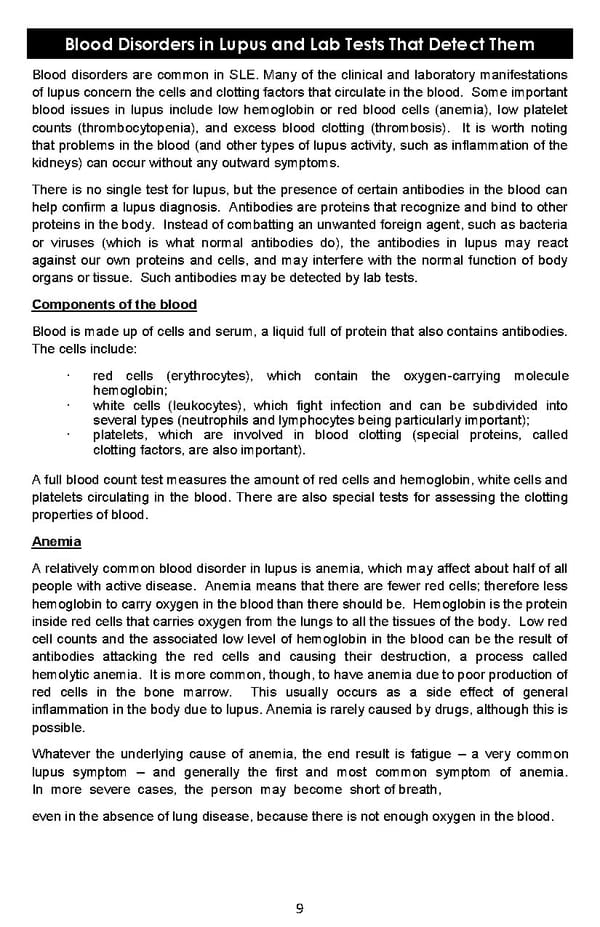Blood Disorders in Lupus and Lab Tests That Detect Them Blood disorders are common in SLE. Many of the clinical and laboratory manifestations of lupus concern the cells and clotting factors that circulate in the blood. Some important blood issues in lupus include low hemoglobin or red blood cells (anemia), low platelet counts (thrombocytopenia), and excess blood clotting (thrombosis). It is worth noting that problems in the blood (and other types of lupus activity, such as inflammation of the kidneys) can occur without any outward symptoms. There is no single test for lupus, but the presence of certain antibodies in the blood can help confirm a lupus diagnosis. Antibodies are proteins that recognize and bind to other proteins in the body. Instead of combatting an unwanted foreign agent, such as bacteria or viruses (which is what normal antibodies do), the antibodies in lupus may react against our own proteins and cells, and may interfere with the normal function of body organs or tissue. Such antibodies may be detected by lab tests. Components of the blood Blood is made up of cells and serum, a liquid full of protein that also contains antibodies. The cells include: · red cells (erythrocytes), which contain the oxygen-carrying molecule hemoglobin; · white cells (leukocytes), which fight infection and can be subdivided into several types (neutrophils and lymphocytes being particularly important); · platelets, which are involved in blood clotting (special proteins, called clotting factors, are also important). A full blood count test measures the amount of red cells and hemoglobin, white cells and platelets circulating in the blood. There are also special tests for assessing the clotting properties of blood. Anemia A relatively common blood disorder in lupus is anemia, which may affect about half of all people with active disease. Anemia means that there are fewer red cells; therefore less hemoglobin to carry oxygen in the blood than there should be. Hemoglobin is the protein inside red cells that carries oxygen from the lungs to all the tissues of the body. Low red cell counts and the associated low level of hemoglobin in the blood can be the result of antibodies attacking the red cells and causing their destruction, a process called hemolytic anemia. It is more common, though, to have anemia due to poor production of red cells in the bone marrow. This usually occurs as a side effect of general inflammation in the body due to lupus. Anemia is rarely caused by drugs, although this is possible. Whatever the underlying cause of anemia, the end result is fatigue – a very common lupus symptom – and generally the first and most common symptom of anemia. In more severe cases, the person may become short of breath, even in the absence of lung disease, because there is not enough oxygen in the blood. 9
 Living Well With Lupus Facts Booklet Page 8 Page 10
Living Well With Lupus Facts Booklet Page 8 Page 10